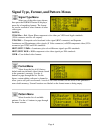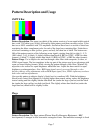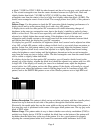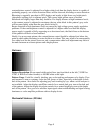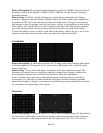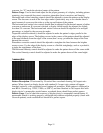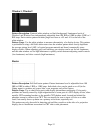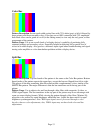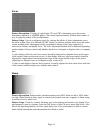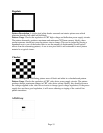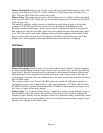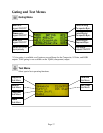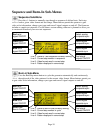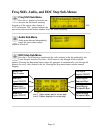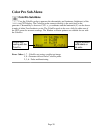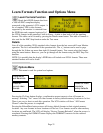
Page 14
Focus
Pattern Description: Consists of capital letter “E”s and “M”s alternating across the screen.
Sometimes refered to as a MEME pattern. The closely spaced elements of these letters makes it
easy to judge the effects of focus adjustments.
Pattern Usage: Used as a reference signal for viewing the effects of focus adjustments across
the entire screen. Since it is difficult for CRT displays to achieve uniform focus across the entire
screen, multiple focus adjustments and/or compromise settings of the focus control(s) is
necessary to achieve acceptable focus. The focus adjustment method will be different depending
on the number of focus controls and whether the device is designed to display video or computer
data.
A video display with only one focus control should be adjusted for optimum focus at the center
of the screen (where most action occurs). A data display with only one focus control should be
adjusted for compromise focus between the center of the screen and the edges of the screen
(adjusting for sharpest focus at a midpoint usually works well).
A video or data display with two focus controls is usually adjusted for best center focus with one
of the controls and best edge focus with the other control.
Ramp
Pattern Description: Pattern makes smooth transition from 100% black on left to 100% white
on right. When electrical video signal is viewed at horizontal scan rate, it appears as linear ramp
from black level to white level.
Pattern Usage: Useful for visually checking gray-scale tracking performance of a display. Poor
performance is seen as a primary color tint (red, green, or blue) at one or more light levels. Also
checks the digitizing linearity of video signal processors. Poor performance is seen as vertical
bands which interrupt the smooth transition from black to white.



